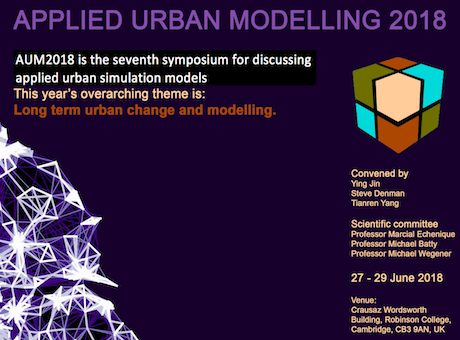This conference is the seventh in a by-now very well established meeting held each June in Cambridge UK, which brings together those working on land use transport interaction/integration models (LUTI models) in the narrower sense and more generally on urban simulation models. Although initially set up to continue work on aggregate land use and transportation models, it has broadened to include other kinds of models and this year there are interesting papers on very large scale models such as UrbanSim, PECAS and TRANUS as well as cellular automata models like SLEUTH. The programme is here and those wanting the papers should contact the authors. During the meeting we have had a session dealing with the contributions of Lionel March to urban modelling. I tweeted about this a couple of weeks ago but here is my contribution – the PDF of my talk about my work with Lionel some 44 years ago when we were both at the University of Waterloo in Engineering. Lionel of course set up the Centre for Land Use and Built Form Studies that morphed into the Martin Centre (at the University of Cambridge’s School of Architecture) in the mid 1970s. Much of what goes on in LUTI modelling can be traced to Lionel and I am not being melodramatic. My talk recounts what we did with probability theory and spatial interaction and how we tried to fashion ideas about priors, posteriors, minimum information and so on. There is much more to say about Lionel’s contributions but readers might be interested in my own thoughts which are in the attached PDF. Enjoy.
Applied Urban Modelling 2018
This entry was posted in Agent-Based Models, Cellular Automata, Complexity, Economies of scale, Entropy, Flows, Interactions, LUTI models, Planning Support, power laws, Smart Cities, Transport Models, urban and regional planning, Urban Dynamics, Urban Models. Bookmark the permalink.









